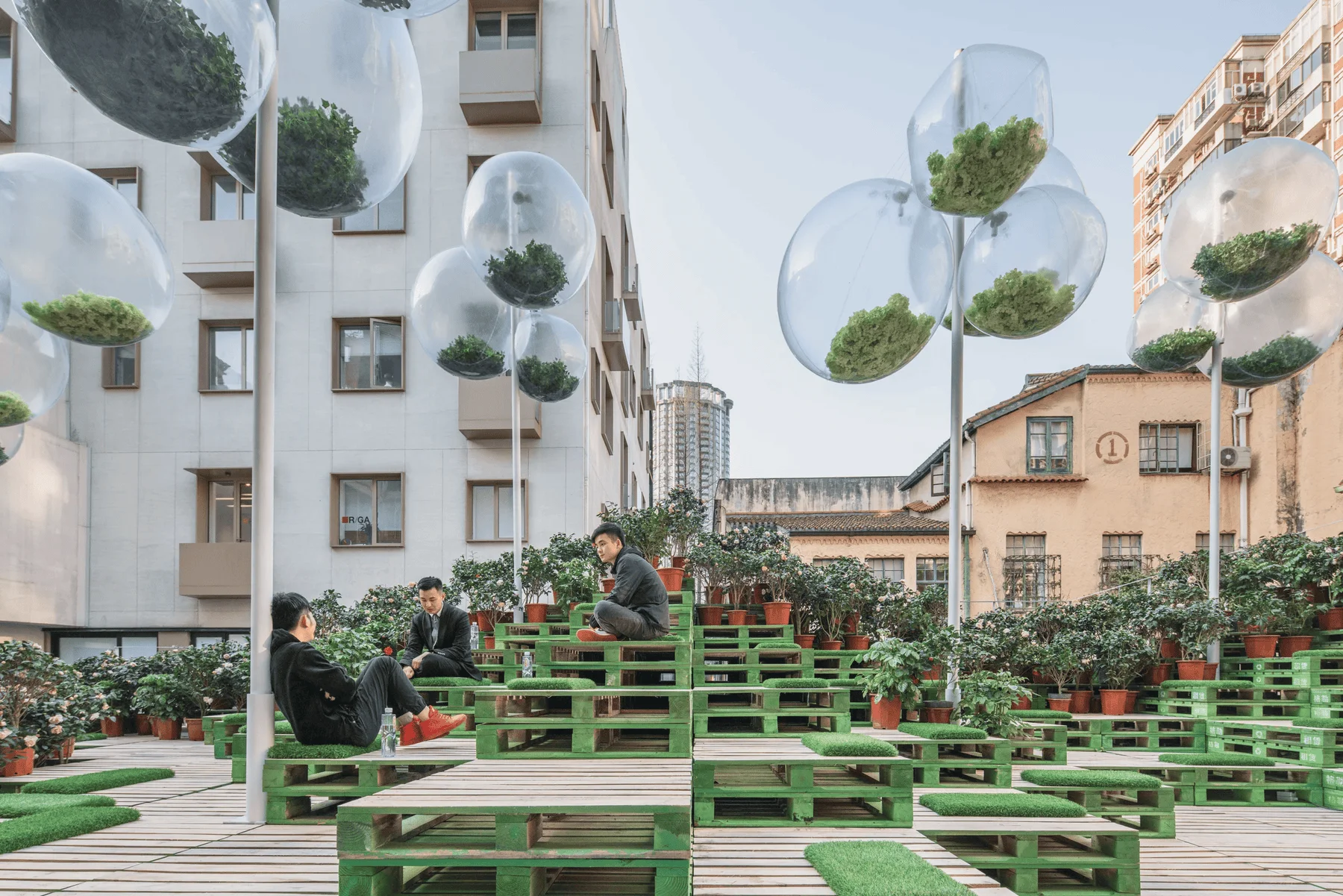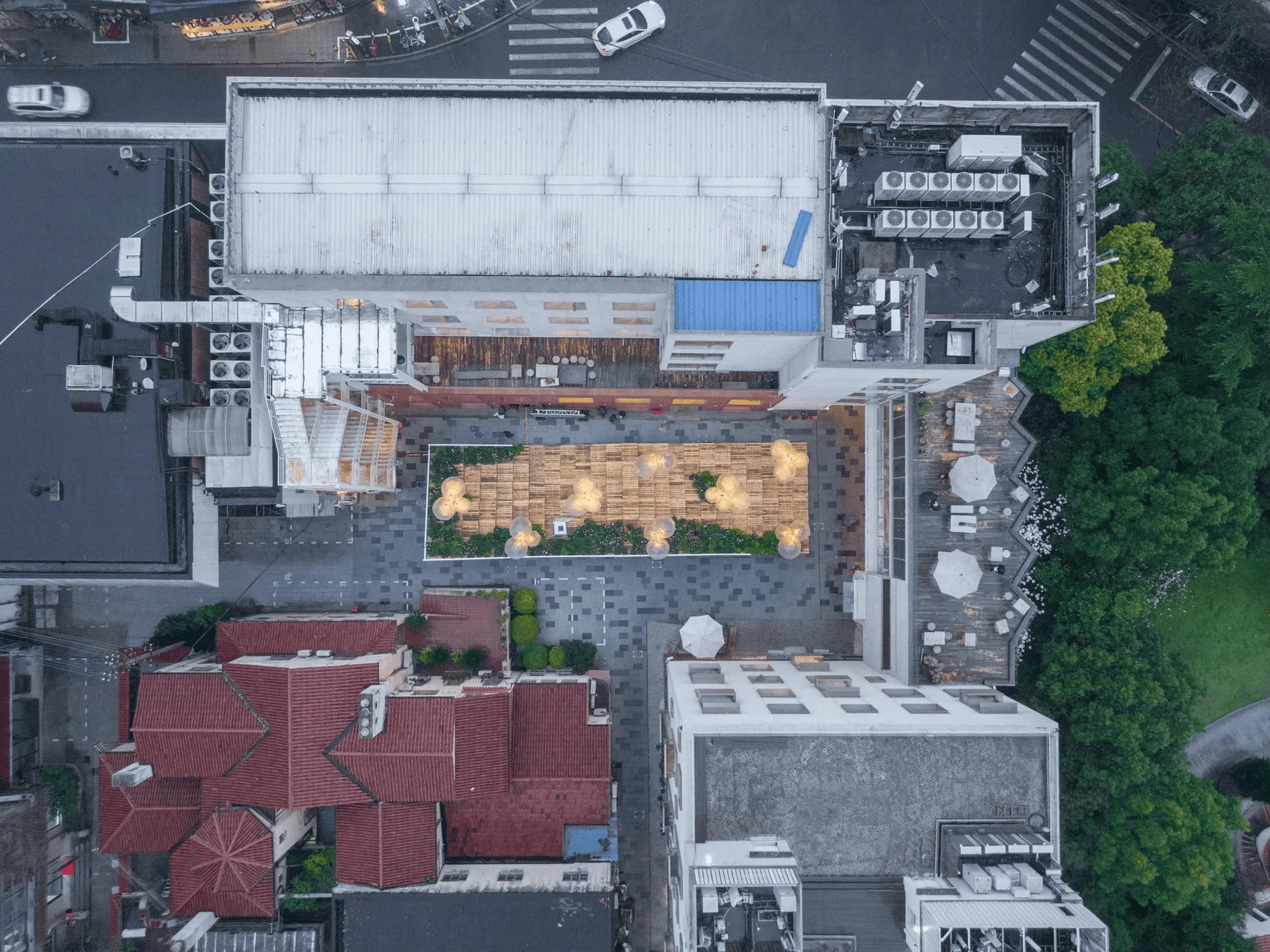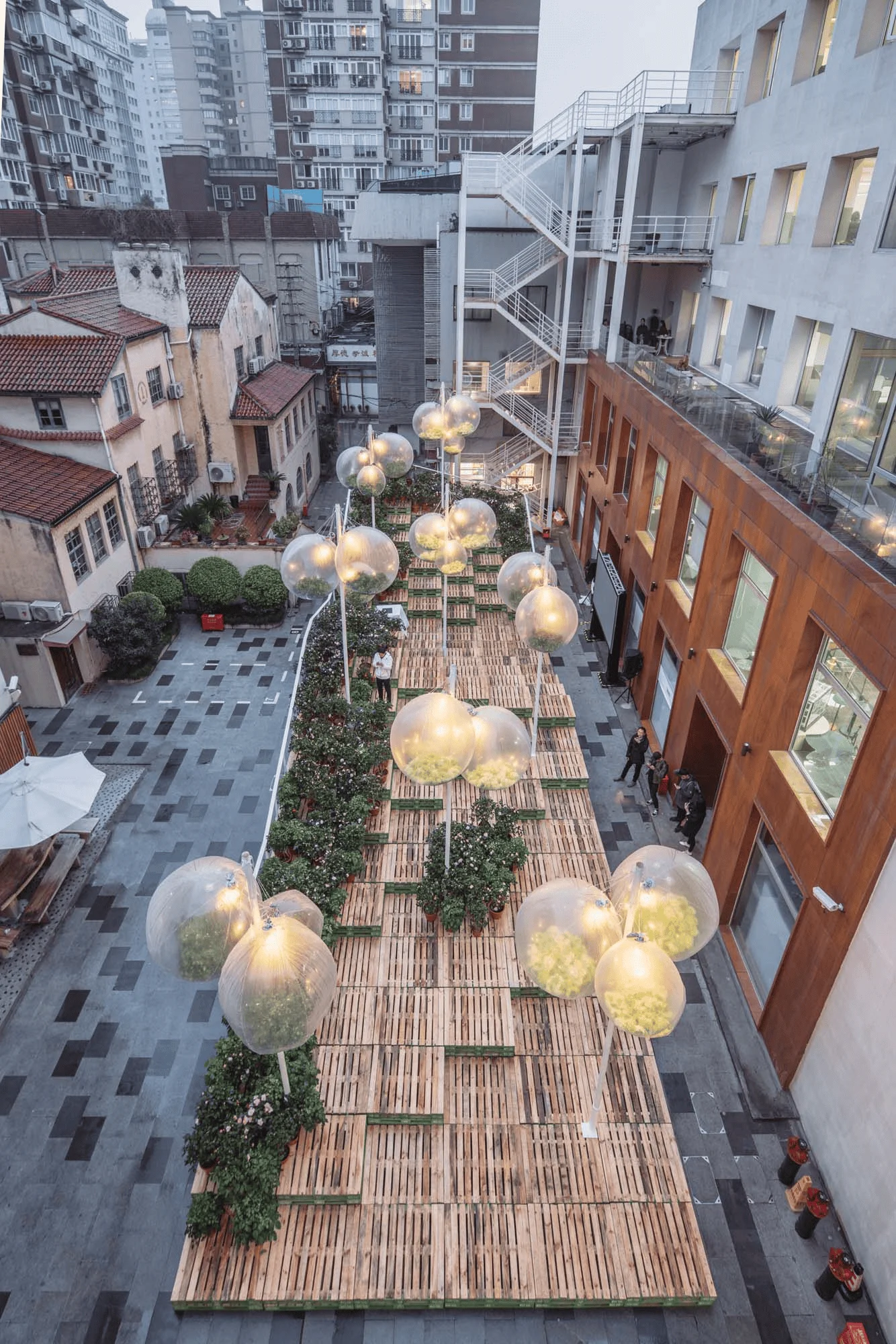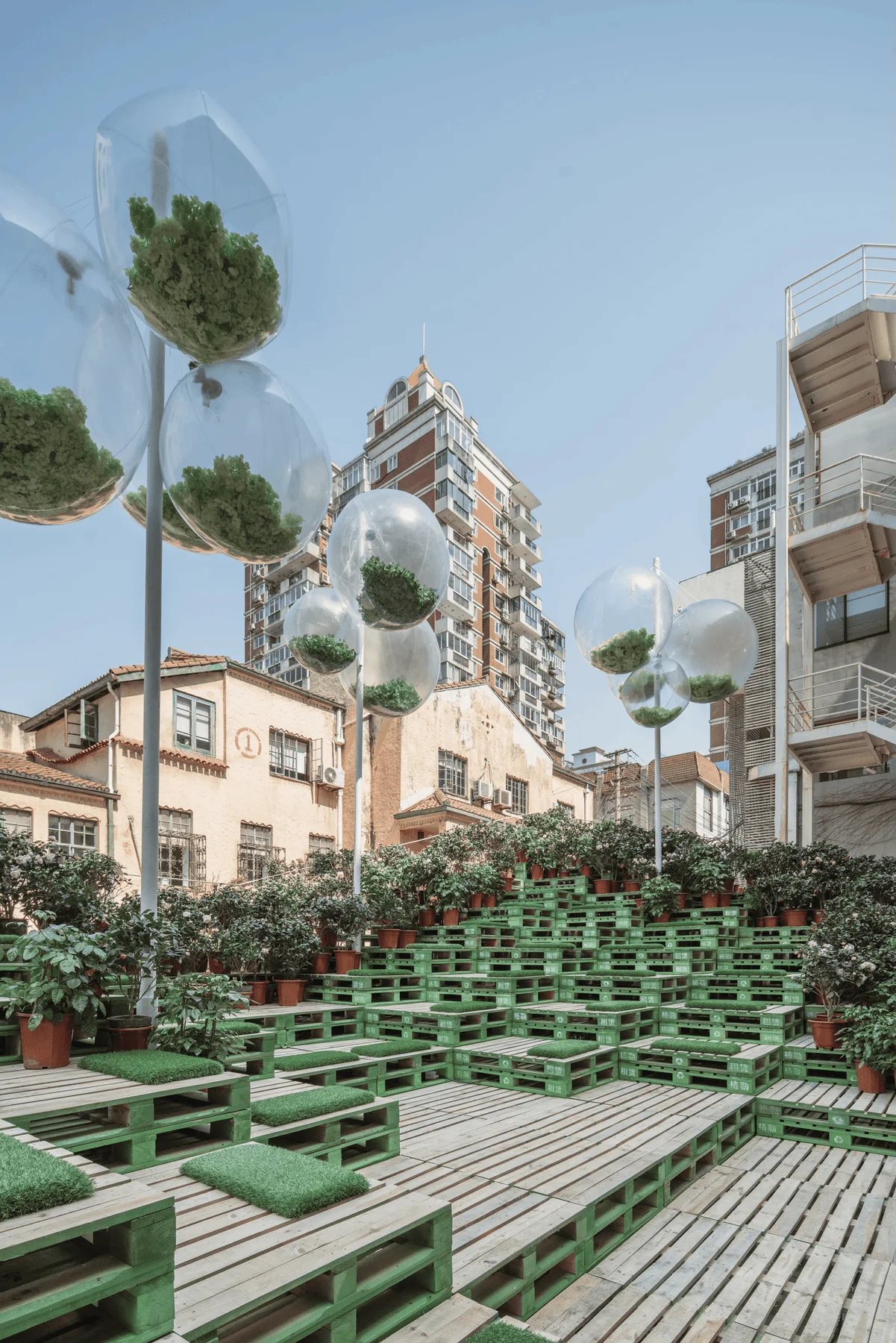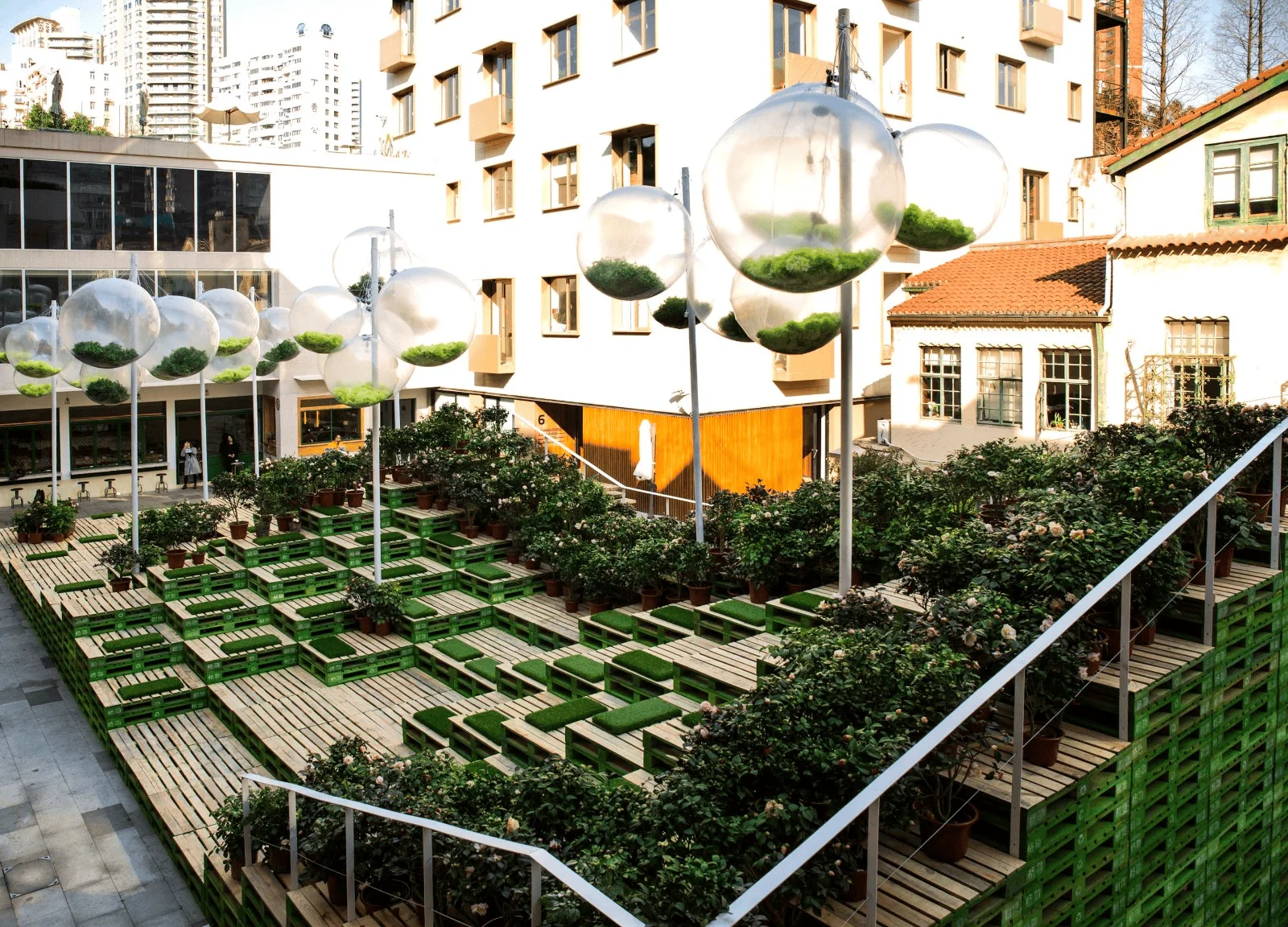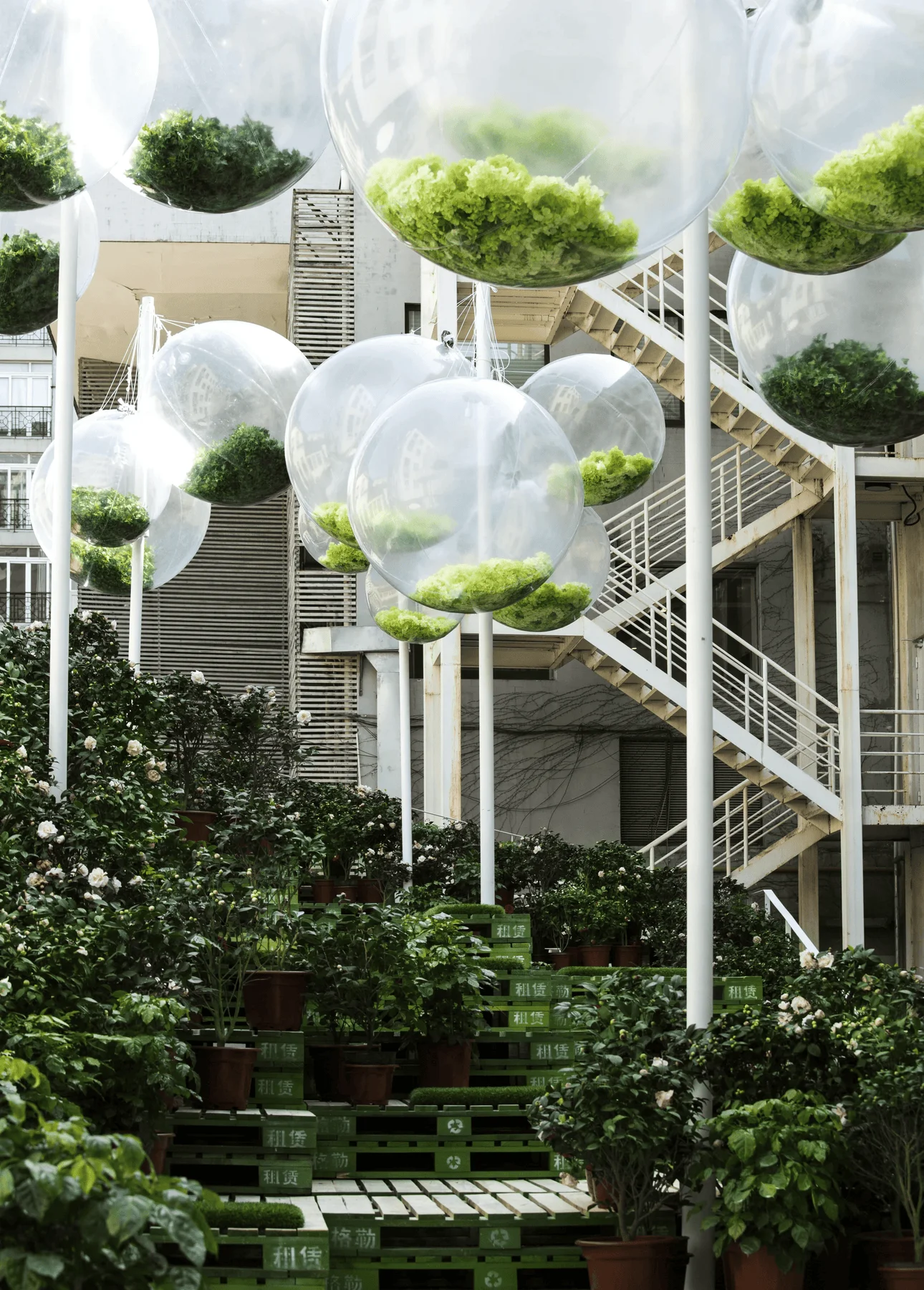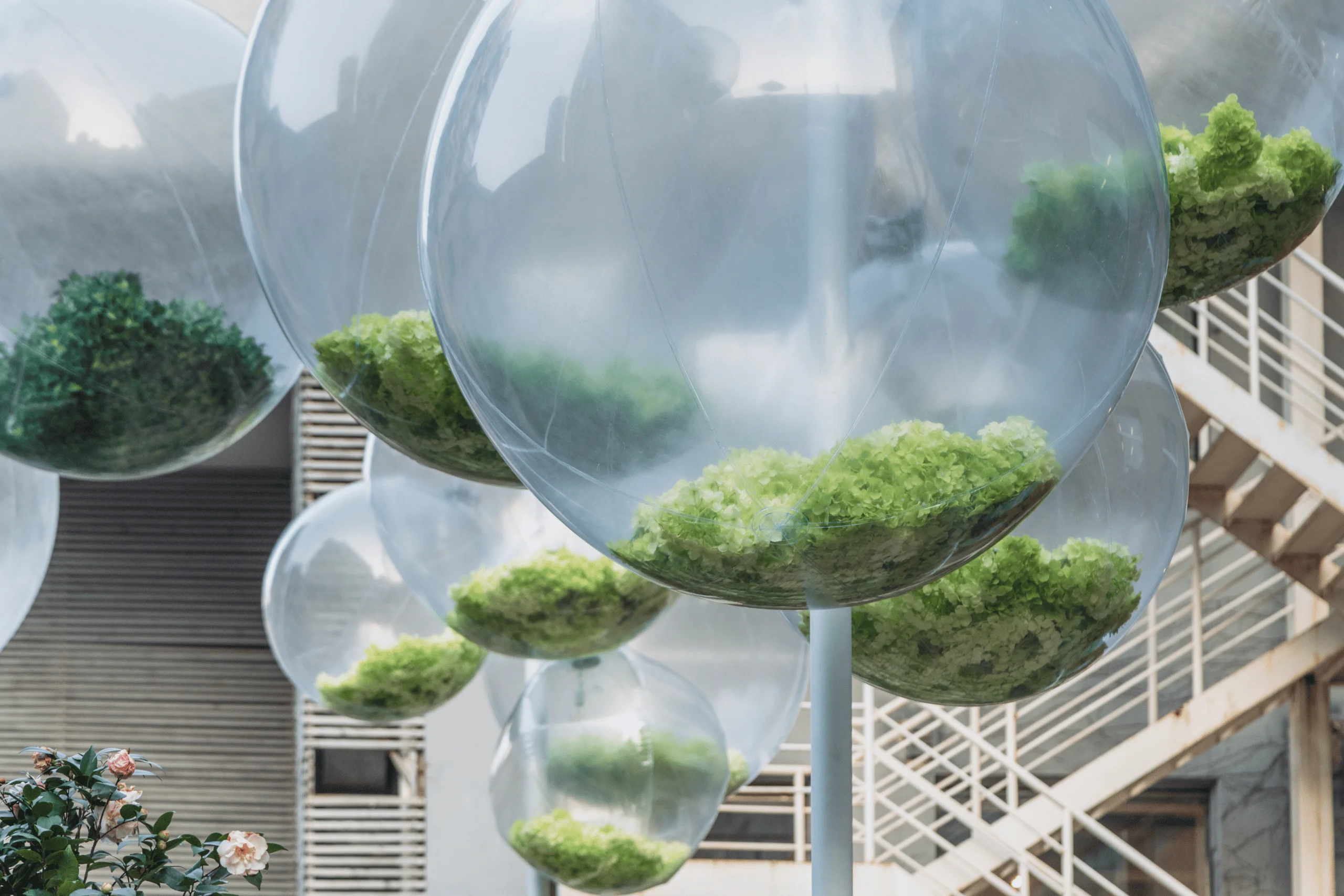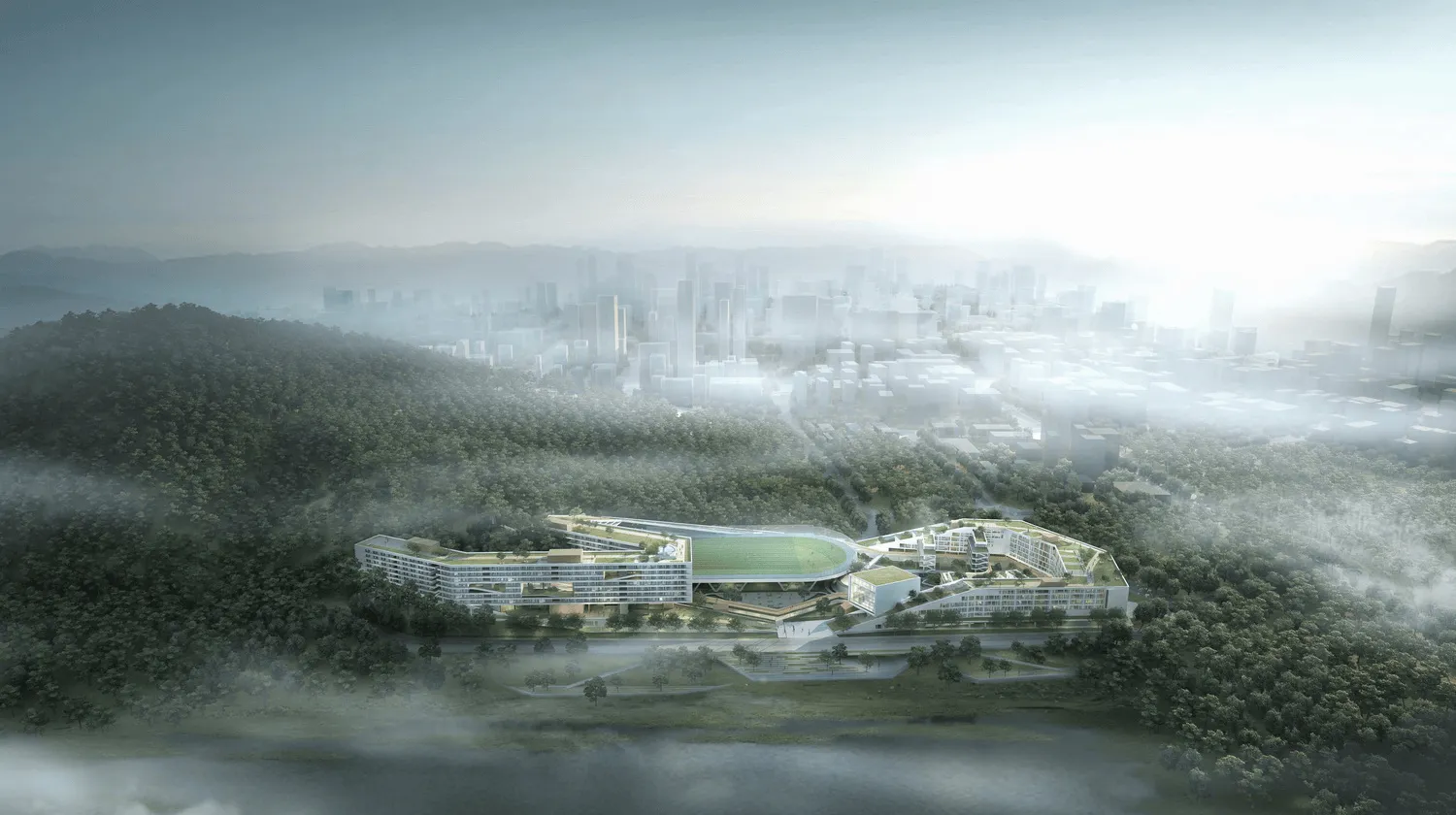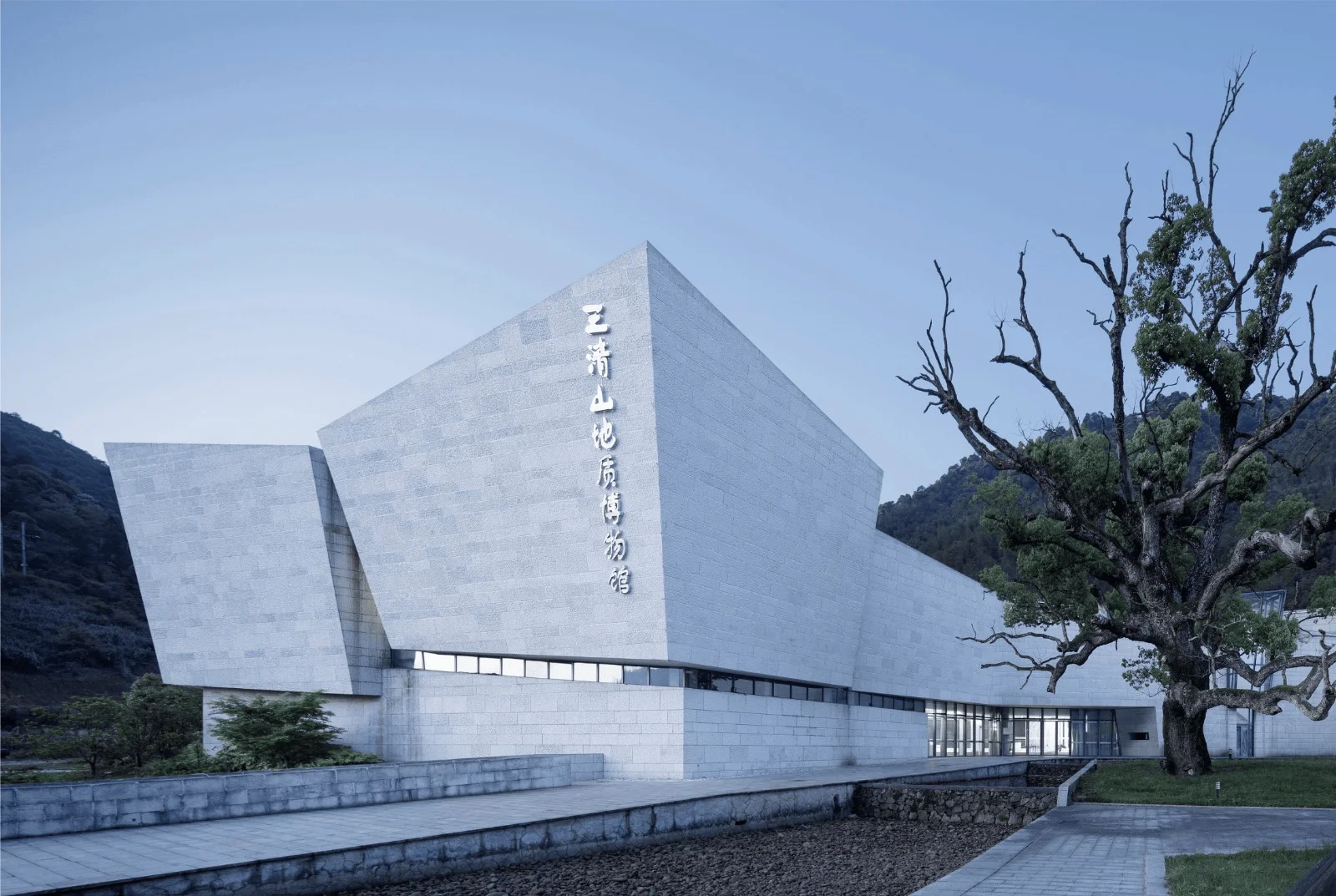The essence of urban life is to strike a balance between residential ideals and real-world demands, making choices amidst a plethora of material resources. When the bustling metropolis becomes the main stage of life, AIM selects a city space, leveraging its existing strengths and personality to inject a touch of joy and respite into the crowded environment.
The design in “Urban Bloom” goes beyond fulfilling a utilitarian function; it’s akin to an artistic experiment, born solely for two purposes: happiness and freedom. Through purely artificial materials and manual techniques, a parking lot is revitalized into an ideal urban garden, infusing “urbanization” with a new meaning.
In this project, humans are the protagonists of urban life. Above the courtyard, buoyant balloon containers adorned with vibrant leaves float, casting dappled shadows softly. Flora and vegetation intersperse among various modules, growing and blooming, transforming the expansive platform into an enthralling garden.
Anfu Road provides an excellent location to showcase the design concept: a traditional neighborhood brimming with local charm, seamlessly integrated with public spaces composed of office buildings, restaurants, shops, and schools. Thirty-story skyscrapers stand shoulder to shoulder with three-story flat-roofed buildings. In Shanghai, such a scale of integration is rare; new city development doesn’t require demolishing old houses, nor does prosperity necessitate embellishing with unconventional commercial facilities. Yet, there was a lack of a garden here, and AIM fills that void.
Upon entering the garden, visitors can freely explore, interpreting and utilizing the space based on their own experiences and needs. Just as people flock to the streets, flowers turn toward the sun, the behavior patterns of each visitor resonate with the energy field within the environment, gradually shaping a unique spatial character.
The pollution and waste generated during urban production are often criticized. In the “Flash Garden,” we interact artificial materials with natural elements, minimizing the space’s impact on the environment as much as possible – no need for radical change, yet still innovative. Fast-paced, high-cost urban living often leads to significant resource waste. Therefore, minimizing resource consumption while fulfilling urbanites’ desire for nature became paramount considerations in the design process.
We extensively used recyclable materials in the garden. Common wooden shipping pallets from the streets were repurposed to create gently undulating terrain, showcasing various aspects of urban life: casual gatherings, small presentations, and outdoor theater seating… Sustainable issues within the urbanization process are addressed here. In a city accustomed to flash trends, the MINI Garden, though fleeting for just a few days, leaves behind profound reflections on urban space transformation. Through this courtyard display, we aim to highlight a new urban landscape: both artificial and natural, both enduring and flexible, both logical and intuitive.
Project Information:
Project Name: Urban Bloom ——AIM’s MINI Garden Location: Shanghai, China Project Area: 330 square meters Completion Time: March 2018 Design Team: Wendy Saunders, Vincent de Graaf, Javier Paz Taibo, Shirley Woo Event Organization: Design Shanghai, URBAN MATTERS by MINI Venue Provided: Yongle Group Co., Ltd., URBAN MATTERS by MINI Construction Team: Tan Wenyuan Photography: URBAN MATTERS by MINI, Qingzhu Photography


